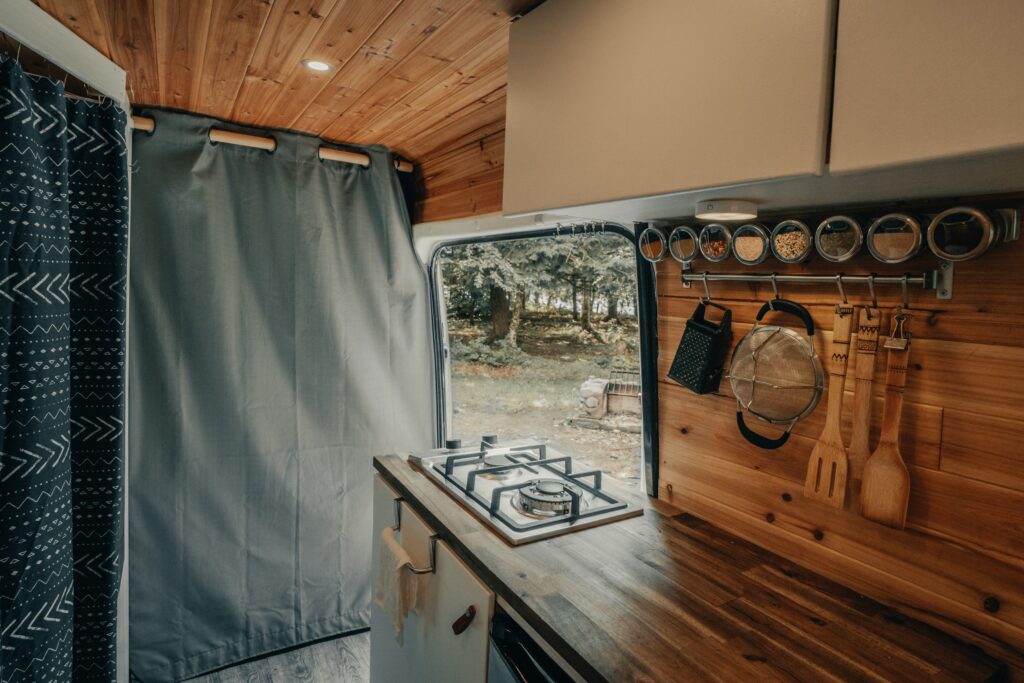Imagine the freedom of living completely off the grid, with no reliance on traditional power sources. But how exactly do you make this dream a reality? In this article, we will break down the essentials of going off-grid and answer the burning question: how many batteries and solar panels do you need? Prepare to unravel the secrets of self-sufficiency and embark on a journey towards energy independence.

Understanding off-grid living
Defining what off-grid living means
Off-grid living refers to a lifestyle where individuals or households are completely independent of public utilities, including electricity, water supply, and sewage systems. It involves generating your own electricity using renewable energy sources, such as solar or wind power, and finding alternative solutions for water and waste management. Off-grid living offers individuals the freedom to live sustainably and reduce their environmental impact.
The appeal and challenges of off-grid living
Off-grid living has become increasingly popular for several reasons. Many people are drawn to the idea of living off-grid to reduce their carbon footprint and have a more self-sufficient and sustainable lifestyle. Additionally, off-grid living allows individuals to disconnect from the stresses of modern society and have a closer connection with nature.
However, off-grid living also presents its own unique set of challenges. It requires careful planning, investment, and ongoing maintenance of the off-grid system components. Living off-grid also means being mindful of energy consumption and adapting to a more frugal lifestyle. Depending on the location, there can be limited access to resources and services, which may require individuals to rely on their skills and creativity.
Deciding if off-grid living is right for you
Before embarking on the off-grid lifestyle, it’s crucial to consider if it aligns with your personal values and goals. Some questions to ask yourself include:
- Are you willing to invest time and money into setting up and maintaining an off-grid system?
- Do you have the necessary skills and knowledge to operate and troubleshoot your off-grid system?
- Are you prepared to live with limited access to modern conveniences?
- Can you adapt to a more sustainable and self-sufficient lifestyle?
Taking the time to reflect on these questions will help you determine if off-grid living is the right choice for you.
The components of an off-grid system
Detailing the different components needed for an off-grid system
To successfully live off-grid, several key components are required:
- Solar panels: These capture sunlight and convert it into usable electricity.
- Inverters: These convert the direct current (DC) electricity generated by solar panels into alternating current (AC) electricity that can be used to power household appliances.
- Batteries: These store excess electricity generated by the solar panels for use during times when sunlight is unavailable.
- Charge controllers: These regulate the charging and discharging of the batteries to optimize their lifespan.
- Backup generator: This provides a backup source of power in case of prolonged periods of cloudy weather or increased energy demand.
- Energy management system: This allows for optimized energy usage, monitoring, and control of your off-grid system.
Importance of renewable energy sources in off-grid living
Renewable energy sources, such as solar and wind power, are crucial for off-grid living. These sources provide a sustainable and clean way to generate electricity without relying on traditional fossil fuel-based power grids. By harnessing renewable energy, off-grid individuals can reduce their carbon footprint and contribute to a cleaner environment.
Choosing the right components for your off-grid system
When selecting components for your off-grid system, it’s essential to consider factors such as energy consumption, location, and budget. Ensure that the solar panels, inverters, batteries, and other equipment you choose are of high quality, suitable for your energy needs, and compatible with each other. Consulting with professionals or experienced off-grid individuals can help you make informed decisions and avoid costly mistakes.
How solar energy works in an off-grid system
Overview of solar panels and their functionality
Solar panels, made up of photovoltaic cells, capture sunlight and convert it into electrical energy. These panels consist of multiple interconnected solar cells that convert the sun’s photons into electricity through the photovoltaic effect. the electricity generated by the solar panels can then be used to power household appliances and charge the batteries in an off-grid system.
Understanding the role of inverters in converting solar energy
Inverters play a vital role in an off-grid system by converting the DC electricity produced by solar panels into AC electricity that can be used to power household appliances. They ensure that the electricity generated is compatible with standard AC appliances, allowing for seamless integration into the off-grid lifestyle. Inverters also regulate the voltage and current to ensure optimal performance and protect the appliances from potential damage.
How much solar energy can realistically power
The amount of solar energy that an off-grid system can realistically power depends on various factors, including the size and efficiency of the solar panels, the sunlight availability in the location, and the energy consumption of the household. By accurately calculating your energy needs and selecting an appropriately sized solar panel system, you can ensure that you have sufficient solar energy to power your off-grid lifestyle.
Calculating your energy usage
Methods to gauge your average household energy consumption
To accurately calculate your energy usage in an off-grid system, it’s important to monitor and measure your average household energy consumption. This can be achieved through various methods, such as using energy monitoring devices, reviewing past utility bills, and tracking appliance energy usage. By understanding your energy consumption patterns, you can determine the size of your off-grid system and make necessary adjustments to optimize efficiency.
Considering peak usage times and seasons
Peak usage times and seasonal variations play a significant role in determining the size and capacity of your off-grid system. It’s essential to consider times when energy demand is highest, such as during extreme weather conditions or when additional appliances are in use. Additionally, seasonal changes in sunlight availability affect the energy production of solar panels. By analyzing these factors, you can ensure your off-grid system meets your energy requirements year-round.
Adjusting your energy usage for off-grid living
Off-grid living requires adopting energy-efficient habits and adjusting your energy consumption patterns. This may involve prioritizing essential energy needs over non-essential ones, using energy-efficient appliances and lighting, employing insulation and passive heating/cooling techniques, and being mindful of unnecessary energy waste. By making conscious choices to reduce energy consumption, you can maximize the effectiveness of your off-grid system and minimize reliance on backup power sources.

Determining how many solar panels you need
How to estimate the number of solar panels required according to your energy needs
Estimating the number of solar panels needed for your off-grid system is crucial to ensure an adequate supply of solar energy. By considering your average energy consumption, the capacity of the solar panels, and the available sunlight, you can calculate the number of panels required. It’s important to account for variables such as panel efficiency, shading, and potential future energy needs to avoid underestimating your solar panel requirements.
Variables that affect solar panel production like location and climate
The location and climate of your off-grid living site significantly influence the production of solar panels. Areas with abundant sunlight, fewer cloudy days, and minimal shading will generate more solar energy. Conversely, regions with less sunlight or harsh climates may require larger solar panel systems to compensate for reduced energy production. Considering these variables in your calculations and choosing high-quality solar panels will help optimize your off-grid energy generation.
The importance of choosing high-quality solar panels
Selecting high-quality solar panels is crucial for the effectiveness and longevity of your off-grid system. High-quality panels offer better efficiency, durability, and resistance to environmental factors, ensuring optimal performance in various conditions. Investing in reputable solar panel brands and working with trusted suppliers or professionals will provide peace of mind and ensure you’re making a wise long-term investment.
Understanding battery storage systems
Role of batteries in an off-grid system
Batteries are an essential component of off-grid systems as they store excess electricity generated by solar panels for use during times when sunlight is not available. They provide a reliable energy source during the night, cloudy days, or periods of increased energy demand. Batteries act as a buffer, allowing off-grid individuals to have a consistent and uninterrupted power supply.
Different types of batteries suitable for off-grid living
Several types of batteries are suitable for off-grid living, each with its advantages and considerations:
- Lead-acid batteries: These are the most commonly used batteries due to their affordability. However, they require regular maintenance, have limited capacity, and a shorter lifespan compared to other battery technologies.
- Lithium-ion batteries: These batteries offer higher energy density, longer lifespan, and better efficiency. They require minimal maintenance and are ideal for those seeking a hassle-free off-grid experience, although they come with a higher price tag.
- Nickel-iron batteries: Although less common, they are known for their longevity and ability to withstand extreme conditions. However, they have lower energy efficiency and higher self-discharge rates.
Selecting the right battery type depends on factors such as budget, anticipated energy usage, maintenance preferences, and long-term goals.
Evaluating battery capacity and lifespan
Battery capacity and lifespan are crucial considerations when planning an off-grid system. Capacity refers to the amount of energy a battery can store, while lifespan refers to the battery’s longevity before it needs replacement. It’s important to choose batteries with sufficient capacity to meet your energy needs while ensuring they have a lifespan that aligns with your long-term goals. Proper battery maintenance, such as regular monitoring, equalizing charges, and avoiding deep discharges, can help extend battery lifespan.

Figuring out how many batteries you need
Using your calculated energy usage to estimate battery needs
Determining the number of batteries needed for your off-grid system involves considering your calculated energy usage, battery capacity, and desired depth of discharge. The depth of discharge represents the amount of usable energy that can be extracted from a battery before recharging. By ensuring your battery bank can store enough energy to meet your needs while considering the depth of discharge to optimize battery lifespan, you can estimate the number of batteries required.
Factoring in days of autonomy for battery storage
Days of autonomy refer to the number of consecutive days your off-grid system can provide electricity without sunshine or supplemental charging. It’s important to factor in days of autonomy to prepare for extended periods of low sunlight or limited access to supplemental charging sources. The number of batteries needed will depend on your comfort level, the climate of your location, and your energy needs during those times.
Considering battery efficiency and degradation over time
Battery efficiency and degradation over time are significant factors when determining the number of batteries needed. Efficiency refers to the ability of a battery to convert stored energy into usable electricity, while degradation refers to the battery’s capacity loss over time. It’s important to consider these factors and select batteries that provide adequate efficiency and minimal degradation to ensure the durability and effectiveness of your off-grid system.
Maintenance and monitoring of the off-grid system
How to maintain your solar panels and batteries
Regular maintenance is essential to keep your off-grid system operating at its peak performance. For solar panels, perform routine cleaning to remove dirt, debris, and potential shading that may reduce their efficiency. Inspect the wiring and connectors for any signs of damage and secure them properly. Batteries require monitoring of their charge levels, equalizing charges periodically, and ensuring proper ventilation to prevent overheating. Following manufacturer guidelines and seeking professional assistance when necessary will help ensure the longevity and effectiveness of your off-grid system.
Monitoring system health and energy production
Monitoring the health of your off-grid system and tracking energy production is crucial for identifying potential issues and optimizing performance. Utilize energy monitoring devices or software to keep track of energy generation, battery charge levels, and overall system efficiency. Regularly review this data to identify any abnormalities or changes that may require attention. Monitoring system health allows for proactive management, maximizing energy production, and minimizing downtime.
Understanding what warning signs to look for indicating component issues
Being aware of warning signs indicating component issues is important to address any potential problems promptly. Some common warning signs to look for include:
- Decreased solar panel output or efficiency
- Unusual sounds or vibrations from the inverter or batteries
- Rapid battery capacity degradation
- Unexplained system failures or shutdowns
If any of these warning signs arise, it’s advisable to consult with professionals or experienced individuals to diagnose and resolve the issue before it escalates.
Costing and budget concerns
Estimating the upfront costs of going off-grid
Going off-grid requires a financial investment to purchase the necessary system components and cover installation costs. The upfront costs typically include solar panels, inverters, batteries, charge controllers, wiring, and professional installation fees. The total cost will vary depending on the size of the system, the quality of the components, and any additional features or backup solutions. It’s important to budget accordingly and consider long-term savings and benefits when evaluating the upfront costs.
Calculating the potential return on investment over time
While the upfront costs may seem substantial, going off-grid can provide long-term financial benefits. As energy prices continue to rise, off-grid individuals become less reliant on traditional utility providers and their associated costs. By producing your own clean energy, you can potentially save money on monthly electricity bills and recover your initial investment over time. A careful analysis of your energy usage, projected cost savings, and the lifespan of the off-grid system can help calculate the potential return on investment.
Exploring financing options and incentives for renewable energy
Financing options and incentives are worth exploring to alleviate the costs of going off-grid. Some financial institutions offer specific loans or financing options for renewable energy projects, allowing you to spread the upfront costs over a longer period. Government incentives and programs may also be available to encourage the adoption of renewable energy and make it more accessible. Researching local, state, or federal incentives and consulting with financial institutions can help identify potential financing solutions and reduce the financial burden of going off-grid.
Backup Solutions for off-grid systems
Identifying alternatives for when solar power is not generating enough power
Backup solutions are crucial for off-grid systems to ensure a consistent power supply during periods with insufficient solar energy generation. Alternatives to consider include:
- Backup generator: A generator can provide supplemental power during prolonged periods of low sunlight or high energy demand. It’s important to choose a generator that is compatible with your energy needs, fuel-efficient, and reliable.
- Energy storage: Expanding your battery capacity can help ensure you have enough stored energy to meet your needs during times of low solar energy generation.
- Load management: Practicing load management involves prioritizing essential energy needs, reducing non-essential energy consumption, and adjusting energy usage patterns during energy-deficient periods.
Considerations for implementing a generator as a backup
When considering a generator as a backup solution, it’s important to assess the compatibility and capacity of the generator with your off-grid system. Ensure that the generator’s power output aligns with your energy needs and that it operates efficiently and reliably. It’s also essential to consider fuel availability, noise levels, emissions, and any local regulations regarding generator usage. Regular maintenance and fuel storage are necessary to ensure the generator is ready for use when needed.
Exploring other renewable energy options like wind and hydro power
In addition to solar power, other renewable energy options can complement an off-grid system. These include wind power and hydro power. Wind turbines can harness the power of wind to generate electricity, providing an alternative or supplemental energy source. Similarly, hydroelectric systems utilize flowing water to generate electricity. Assessing the feasibility, resource availability, and compatibility of these options with your location and energy needs can provide additional opportunities for self-sufficiency and resilience in your off-grid lifestyle.
In conclusion, understanding the components of an off-grid system, calculating energy usage, and choosing the right equipment are crucial when transitioning to off-grid living. Regular maintenance and monitoring ensure the longevity and efficiency of your system, while careful budgeting and exploring incentives can alleviate financial concerns. By considering backup solutions and exploring alternative renewable energy options, you can create a robust and sustainable off-grid lifestyle tailored to your needs and values.




